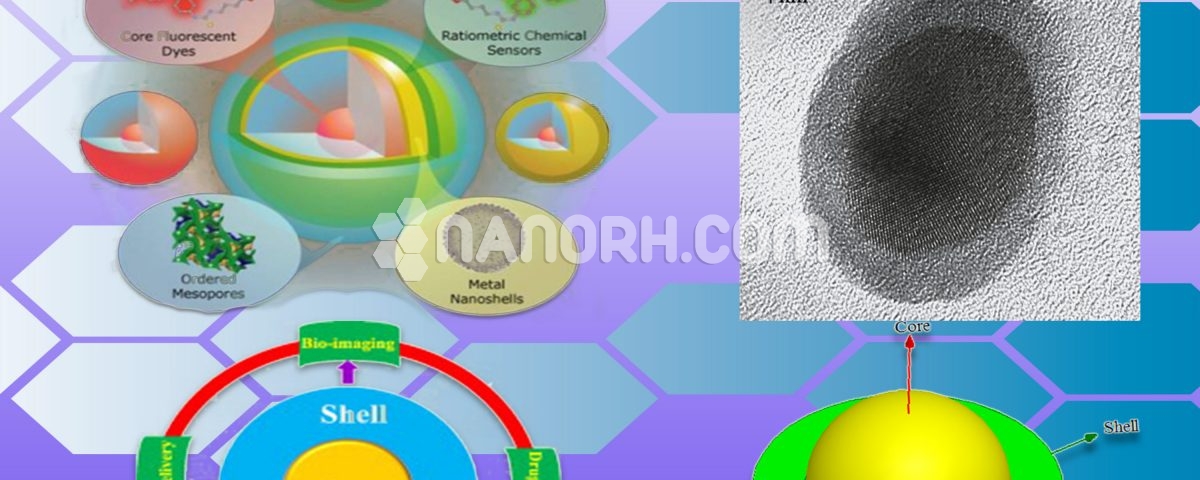CORE-SHELL NANOPARTICLES
CORE-SHELL NANOPARTICLES
INTRODUCTION
The materials at nano-measurement have criticalness significance in modifying compound, electrical, optical conduct related to them. Nanomaterials demonstrate the Bandgap alteration, attractive properties tuning and surface region improvement and some other helpful properties. At first, the nanoparticles have much-preferred properties over the mass materials. Later on, scientists found that heterogeneous, composite or sandwich colloidal semiconductor particles have preferable effectiveness over their relating single particles; now and again they even build up some new properties. They build up the concentric multilayer semiconductor nanoparticles with the view to enhancing the property of such semiconductor materials. Henceforth those particles are named as "Core-shell nanoparticles".
Core-shell nanoparticles are broadly utilized in various applications, for example, biomedical and pharmaceutical applications, catalysis, hardware, improving photoluminescence, making photonic precious stones, and so on. Specifically, in the biomedical field, the larger part of these particles are utilized for bioimaging, controlled medication discharge, directed medication conveyance, cell marking, and tissue building applications.
PROPERTIES OF CORE-SHELL NANOPARTICLES
The properties of Core-shell nanoparticles are estimated reliant as well as connected with the genuine shape. For instance, physical and compound properties, for example, reactant action and selectivity, electrical and optical properties, and dissolving point are likewise all exceptionally shape-subordinate. Furthermore, different properties, for example, affect the ability to surface-upgraded Raman dissipating (SERS) and the plasmon reverberation highlights of nanoparticles likewise rely upon the molecule morphology. So also impact of temperature is the most widely recognized response parameter used to control the response energy for Core-Shell nanoparticles arrangement. As a rule, for exothermic responses, the response rate diminishes with expanding temperature, though the inverse is the situation for endothermic responses.
Properties of Core-Shell attractive nanocrystals, for example, the blocking temperature, attractive immersion, and changeless polarization are on the whole reliant on molecule measure, yet the coercivity of the nanocrystals thoroughly relies upon the molecule shape as a result of surface anisotropy effects. Different shaped magnetic nano-crystals possess tremendous potential in helping our fundamental understanding of not only magnetism but also technological applications in the field such as high-density information storage.
USES OF CORE-SHELL NANOPARTICLES
Contrasted and single particles, Core-shell particles have numerous useful applications, particularly in the biomedical and gadgets fields, which are given underneath:
BIOMEDICAL APPLICATIONS
Core-shell nanoparticles have numerous potential and energizing applications in the biomedical field. Albeit over 10 years a few applications have just been created there are significant applications still at the development arrange. In the biomedical field, Core-shell nanoparticles are for the most part utilized for controlled medication conveyance, for bioimaging, for cell naming, as biosensors, and in tissue building applications and so forth.
COLORIMETRY AND BIOSENSING
Core-shell particles can be a superior decision for this reason in light of improved affectability. Core-shell particles with exceedingly controlled optical properties are utilized in a few biotechnological applications. It is conceivable to adjust these particles to improve their incorporation with biomolecules. This can be accomplished by altering their surface layer for improved fluid dissolvability, biocompatibility, and biorecognition. For such applications, for the most part, silica center and gold or silver shells have been utilized in light of the fact that they offer profoundly good optical and compound properties for biomedical imaging and helpful applications. It is conceivable to connect biomolecules to these Core-shell nanoparticles adhering and frame an immunoassay to identify analytes growth cells, tumors, antibodies, and microorganisms. These particles offer a delicate, solid and fast discovery of biomolecules.
CHEMICAL LIBRARIES
Substance library has applications in medicate conveyance, quality screening, bar-coding, and natural imaging. Semiconductor nanoparticles are photograph stable and have consistent excitation spectra over the edge of retention. Excitation of this molecule with a solitary thin band source produces outflow at various wavelengths. Nanoshells which include layout particles (core) and immobilized fluorescent particles (shell) can be utilized as standardized tags. The scanner tag created on layout particles can be effectively decoded by fluorescence microscopy. Comparative libraries can be orchestrated utilizing exemplification of nanoparticles inside silica or polymer circles.
THERAPEUTIC APPLICATIONS AND MEDICATION CONVEYANCE
Core shells nanoparticles have increased significant consideration in clinical and restorative applications. Via precisely picking the center to-shell proportion, it is conceivable to outline novel nanoshell structures, which either assimilate light or dissipate it successfully. Solid safeguards can be utilized in photograph warm treatment, while productive scatterers can be utilized in imaging applications. Core-shell nanoparticles (for the most part gold nanoshells) particles conjugated with proteins and antibodies can be inserted in a network of the polymer. These polymers have a liquefying temperature which is somewhat above body temperature. At the point when such a nanoshell and polymer lattice is lit up with full wavelength, nanoshells retain warmth and exchange to the nearby condition. This causes crumple of the system and arrival of the medication. In Core-shell nanoparticles particles-based medication conveyance frameworks either the medication can be embodied or adsorbed onto the shell surface. The shell associates with the medication through a particular utilitarian gathering or by electrostatic adjustment strategy. When it interacts with the organic framework, it coordinates the medication.

